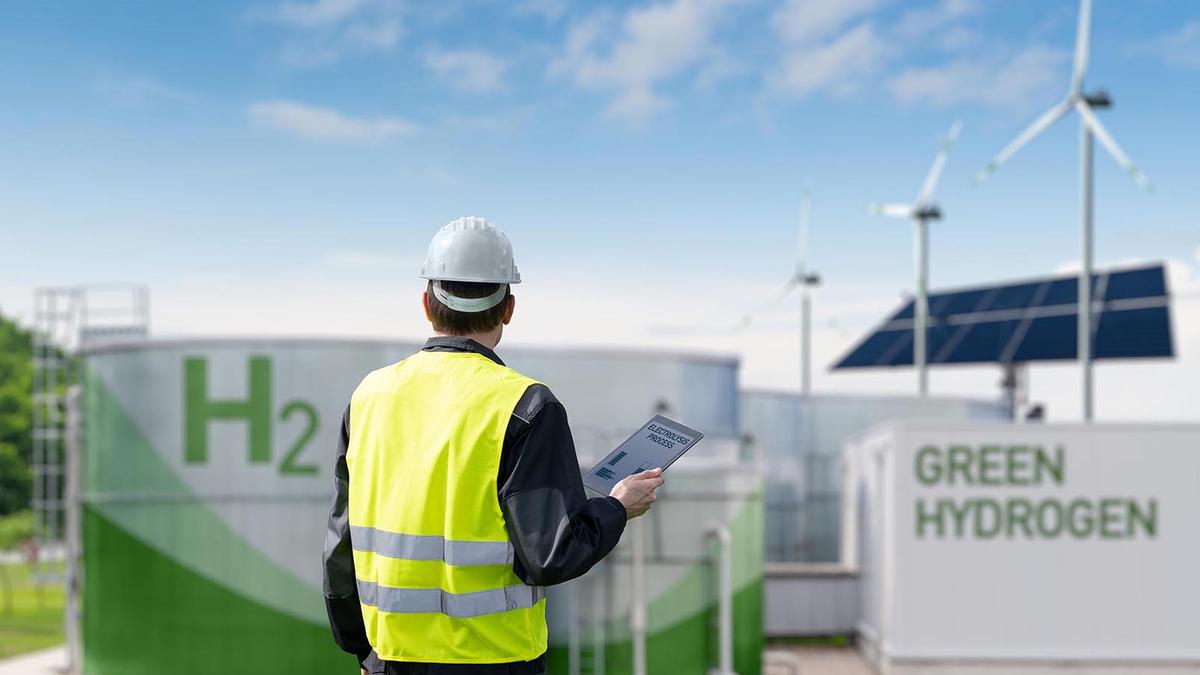For representative purposes.
| Photo Credit: Getty Images
The story so far: In the clean energy market, the limelight has recently shifted from solar and wind towards green hydrogen. Hydrogen is widely used in industries for oil refining and ammonia and methanol production, but most of it is currently produced using fossil fuels, which add to carbon emissions. Green hydrogen technologies used in production, storage, transportation and application are rapidly advancing, with electrolysers at the core of this transformation. Electrolysers are central to its production, much like photovoltaic (PV) modules are to solar power. And just as no discussion on solar PVs is complete without examining China’s dominance in its supply chain, a similar story seems to be unfolding with electrolysers.
Is China a dominant player?
By 2024, China had become the world’s leading hydrogen producer, reaching an annual production of 36.5 million tonnes. China produced a total of 1,20,000 tonnes of green hydrogen, which represents almost half of the world’s green hydrogen output. With respect to electrolysers, China has come to dominate nearly 85% of the global manufacturing capacity of Alkaline electrolysers. Currently, Alkaline (ALK) and Proton Exchange Membrane (PEM) electrolysers are used in commercial plants, with ALK electrolysers being a more mature technology. While the costs of ALK electrolysers are low, they are less efficient than PEM electrolysers in producing hydrogen using renewable energy, given problems of fluctuating loads. PEM electrolysers, on the other hand, offer higher efficiency even at fluctuating loads as well as higher purity hydrogen as output. For now, China’s dominance rests on its manufacturing capacity of ALK electrolysers, both for domestic consumption and exports.
Looking at China’s growing electrolyser manufacturing capacity, and its roll-out of large-scale green hydrogen production plants, concerns over its increasing global share in green hydrogen production and supply chain are beginning to emerge.
How did China establish dominance?
China was able to capture the global market of solar PV modules by offering cheaper rates due to state subsidies; integrated supply chains; control over raw materials; and quicker rollout of production facilities. In the case of electrolysers, the average price of ALK electrolysers supplied by China has been significantly lower than the average overseas price. Utilising Chinese ALK electrolysers can offer up to 45% of cost advantages in setting up hydrogen production plants in Europe. Electrolyser prices in China are decreasing further due to supply chain maturity and increasing entrants in the market. In 2024, a 1,000 Nm3/h (5MW) ALK electrolyser system was priced at six million yuan (approx. 1,200 yuan/kW or $167/KW), a 20% drop from 2023 whereas, a 200 Nm3/h (1MW) PEM electrolyser system was also priced at about six million yuan (~ 6,000 yuan/kW or $838/KW) which is a reduction of 32% from 2023.
Further, ALK electrolysers are made with nickel and steel both of which are abundantly available in China. PEM electrolysers, however, rely on precious metals such as iridium, platinum, and titanium, making significant cost reductions challenging — even for China. Despite its manufacturing prowess, China remains one of the world’s largest importers of these critical materials. Moreover, hydrogen production requires system integration that varies with the required hydrogen purity. The final application of the hydrogen produced determines the specific systems that must be installed. As a result, competing purely on price might not be enough in the green hydrogen industry; exporters will have a greater advantage in delivering fully integrated systems.
Chinese solar and wind equipment manufacturers like LONGi and Envision are entering the green hydrogen space. Besides manufacturing electrolysers, the firms have also signed deals to construct hydrogen production facilities overseas. For instance, China-based Guofu Hydrogen is partnering with German companies to develop electrolyser systems and hydrogen production facilities in Germany. Envision Energy launched the world’s largest green hydrogen and ammonia plant, powered entirely by renewable energy sources.
Have other competitors emerged?
China is poised to become a dominant force in the global green hydrogen equipment market, as its firms proactively scale up production facilities and expand their international presence. However, this dominance is subject to significant advancements in technology and greater integration of their supply chains.
Despite their aggressive expansion, Chinese firms will face considerable hurdles in replicating their past success. Unlike solar, the green hydrogen sector is highly prioritised by many countries that have rolled out national plans and wish to maintain their local competitiveness. As a result, Chinese imports are likely to face significant scrutiny, restrictions, and stringent regulations, making it more challenging for them to compete on the same terms as they did in previous industries. Concerns over supply chain security are likely to play a larger role in shaping the market for green hydrogen technologies, potentially limiting the unhindered entry of Chinese products.
Bhumika Sevkani is a Research Analyst at The Takshashila Institution.
Published – October 03, 2025 08:30 am IST
